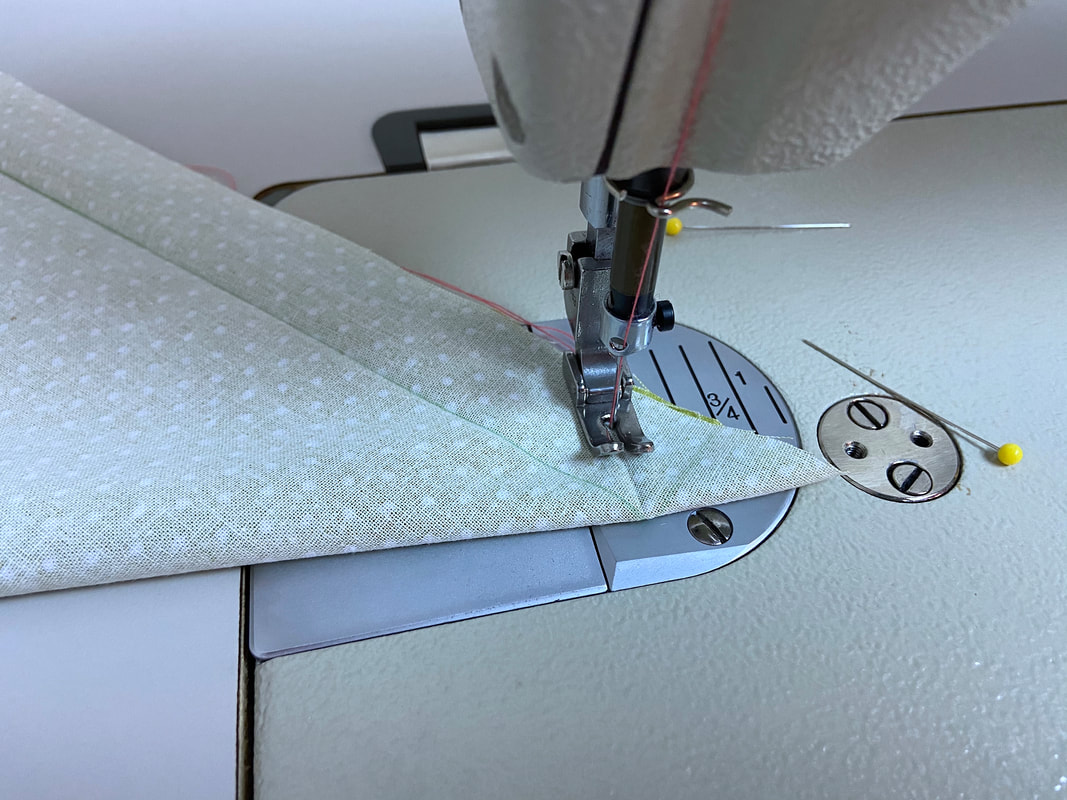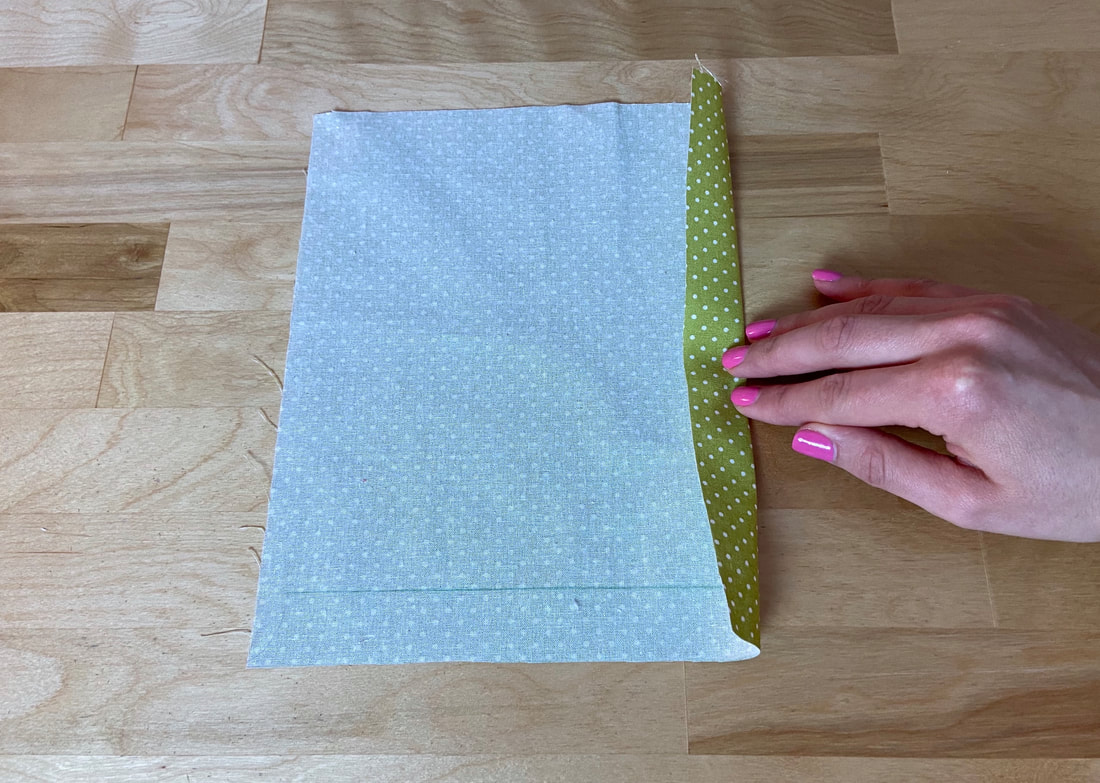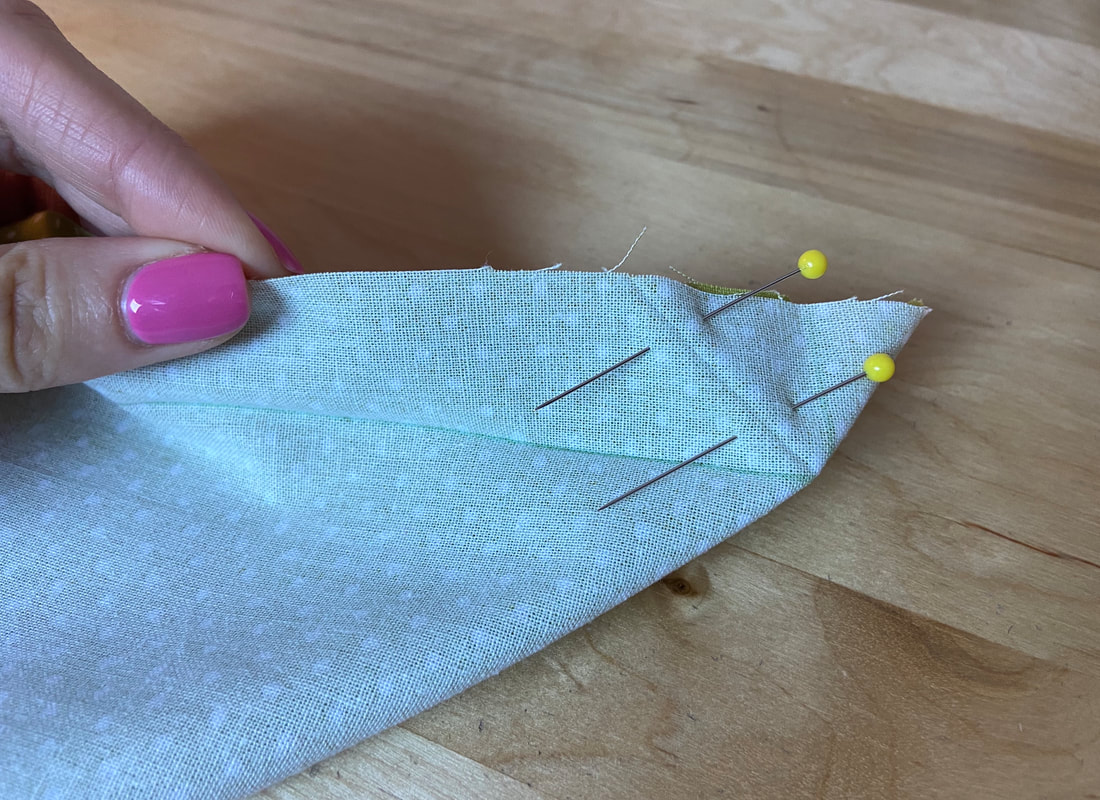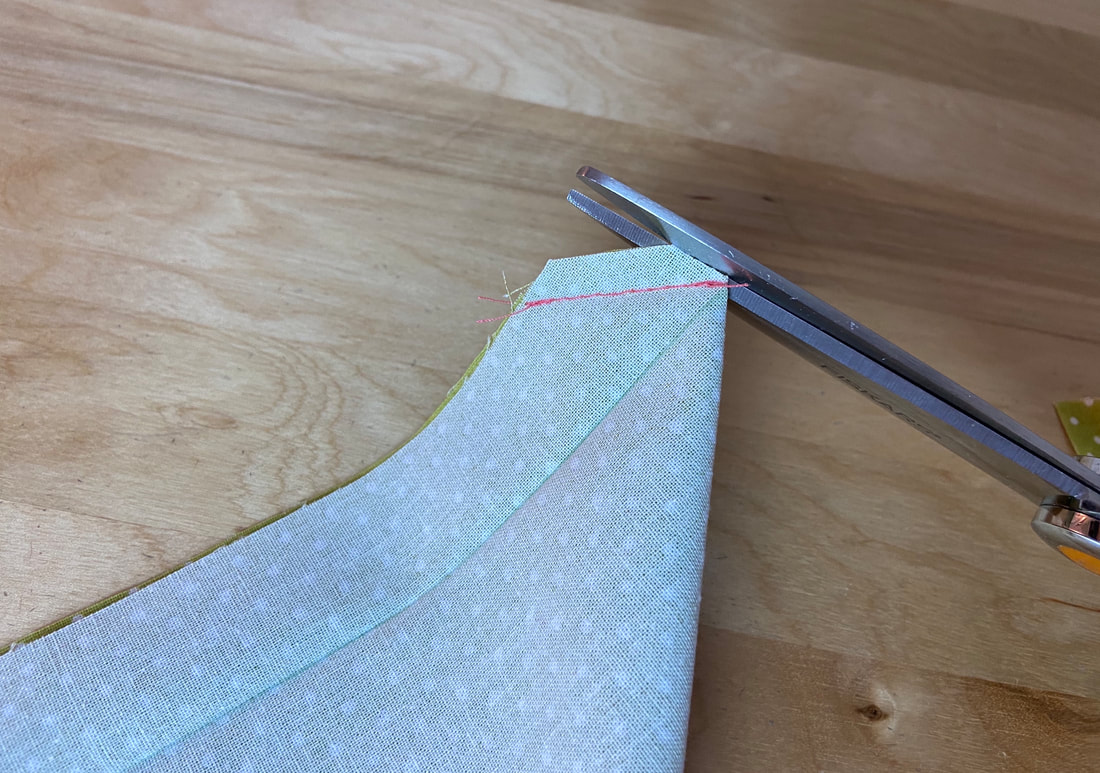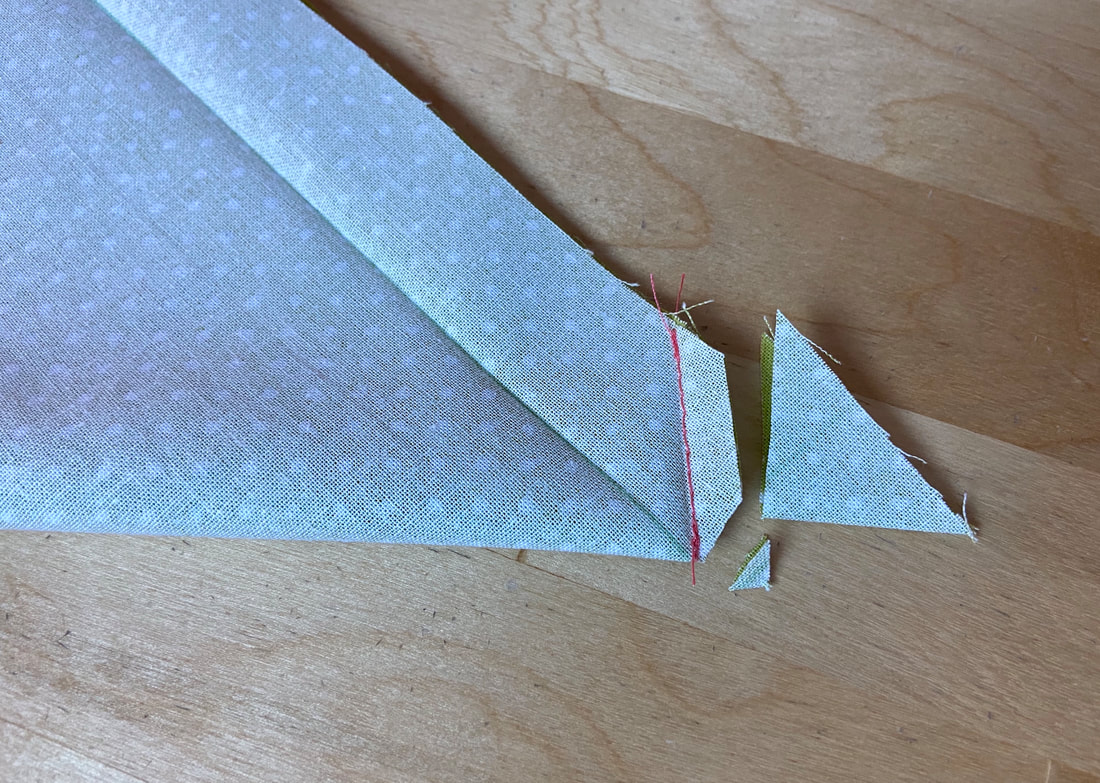What Is Mitering And How Is It Used In Garment Construction
You may or may not be familiar with the term mitering, but if you’ve been sewing for a little while, you have certainly come across the need for this technique.
Mitering is used to finish fabric corners. It entails sewing two corner edges together such that they create a diagonal seam. This seam then smoothly encloses the corner’s raw fabric edges.
Mitering can be applied by means of the seam allowance itself, using bias strips, binding or bias tape. In this tutorial, you’ll learn how to use each one of these mitering techniques to clean-finish fabric corners.
You’ll find yourself having to finish fabric corners at the hemline of open-front garments, when completing a slit hem, or sewing any irregularly-angled hemlines that feature an opening.
When the fabric edges intersect into a perfectly straight angle, you may be able to fold the corner seam allowance in a linear way, without the need for mitering. However, this can often result in a bulky finish with edges slightly protruding from the bottom of the hemline.
When fabric edges do not meet at a perfect straight angle, folding the corner seam allowances over one another is virtually impossible to achieve in the clean-finishing process. In this case, mitering is truly the best tool.
As noted above, the corner mitering technique forms a diagonal seam which connects the lengthwise garment edge (vertical) to its crosswise edge (horizontal). To determine the exact location of the diagonal seam and how much excess should be taken in, these edges are first ironed in a position that creases the stitching guidelines.
To master mitering means to master the correct folding process. Once you achieve the diagonal crease marks, the stitching process is easy to complete.
Mitering can be used on both inward and outward corners. In this tutorial we’ll focus on outward corners. You will learn 3 common techniques for mitering corners at the hem: mitering seam allowance, mitering with a bias strip, and mitering binding in an exposed fashion.
How To Miter Fabric Corners Using Seam Allowance Excess
Perhaps the easiest of all mitering techniques, this one uses the existing vertical (lengthwise) and horizontal (crosswise) seam allowance to enclose all raw edges into a diagonal corner seam. Folding and ironing makes the process fairly easy and straightforward.
1. Fold the vertical fabric edge (lengthwise) down the seamline towards the wrong side of the fabric. Iron to crease along the seamline.
You may or may not already have the seamlines marked. If not marked, simply measure the seam allowance width from the fabric cut edge in using a gage pointer or ruler. Fold the fabric cut edge at this distance.
After ironing the fold, open the folded edge to view the crease mark.
2. Repeat the folding and ironing process on the horizontal (crosswise) edge intersecting the corner. This edge usually corresponds to the hem. Open the folded edge to expose the fold line.
Looking at the corner, the intersecting crease lines create a replica of the outer corner edge. These fold lines are placed at an even seam allowance throughout.
3. With the fabric wrong side up, fold the fabric corner in diagonally towards the wrong side of the fabric such that the inner crease corner intersects this diagonal fold as shown.
Iron the diagonal fold in this position.
4. Open the folded corner to expose the freshly-formed diagonal crease line.
5. Fold the corner with fabric face sides touching such that the lengthwise (vertical) and crosswise (horizontal) edges are aligned.
Insert pins to secure the corner in this folded position (do not iron this fold).
In this position, the diagonal crease splits in half and both sides are overlapping as shown.
6. Starting at the raw fabric edges, stitch the folded corner directly on top of the diagonal crease mark until you arrive at the corner fold.
7. Trim the excess corner fabric down to ¼” away from the diagonal stitch applied in Step 6 above.
To minimize bulk, trim diagonally at the corner point.
8. Arrange the seam diagonally in relation to the finished corner. Iron the ¼” seam allowance edges open as shown.
9. Flip the finished corner on its right side. The lengthwise and crosswise folds should naturally fall into place (as folded in Steps 1-2 above).
Iron the finished edges one last time. The final mitered corner should lay flat and smooth, and have clearly defined corner edges.





